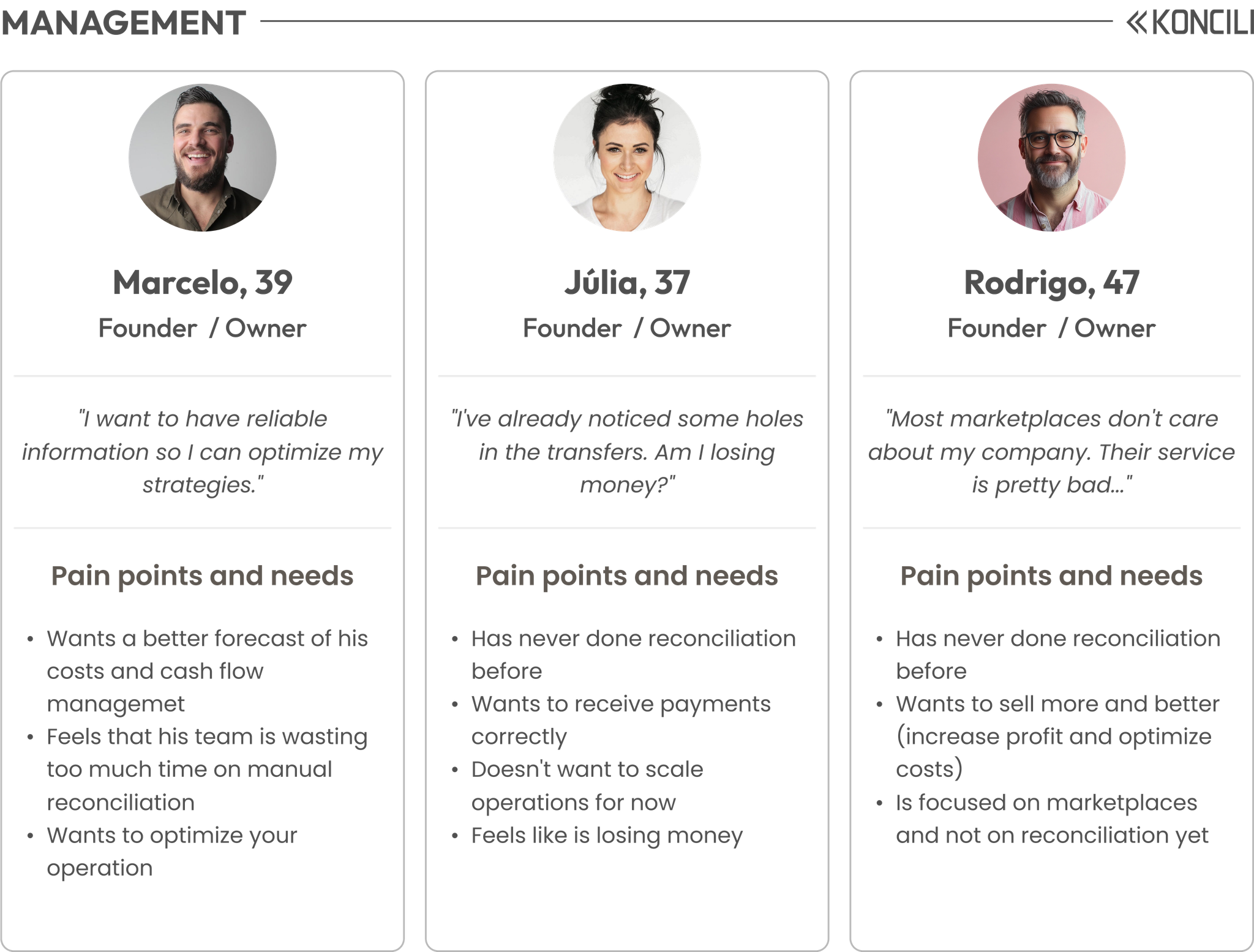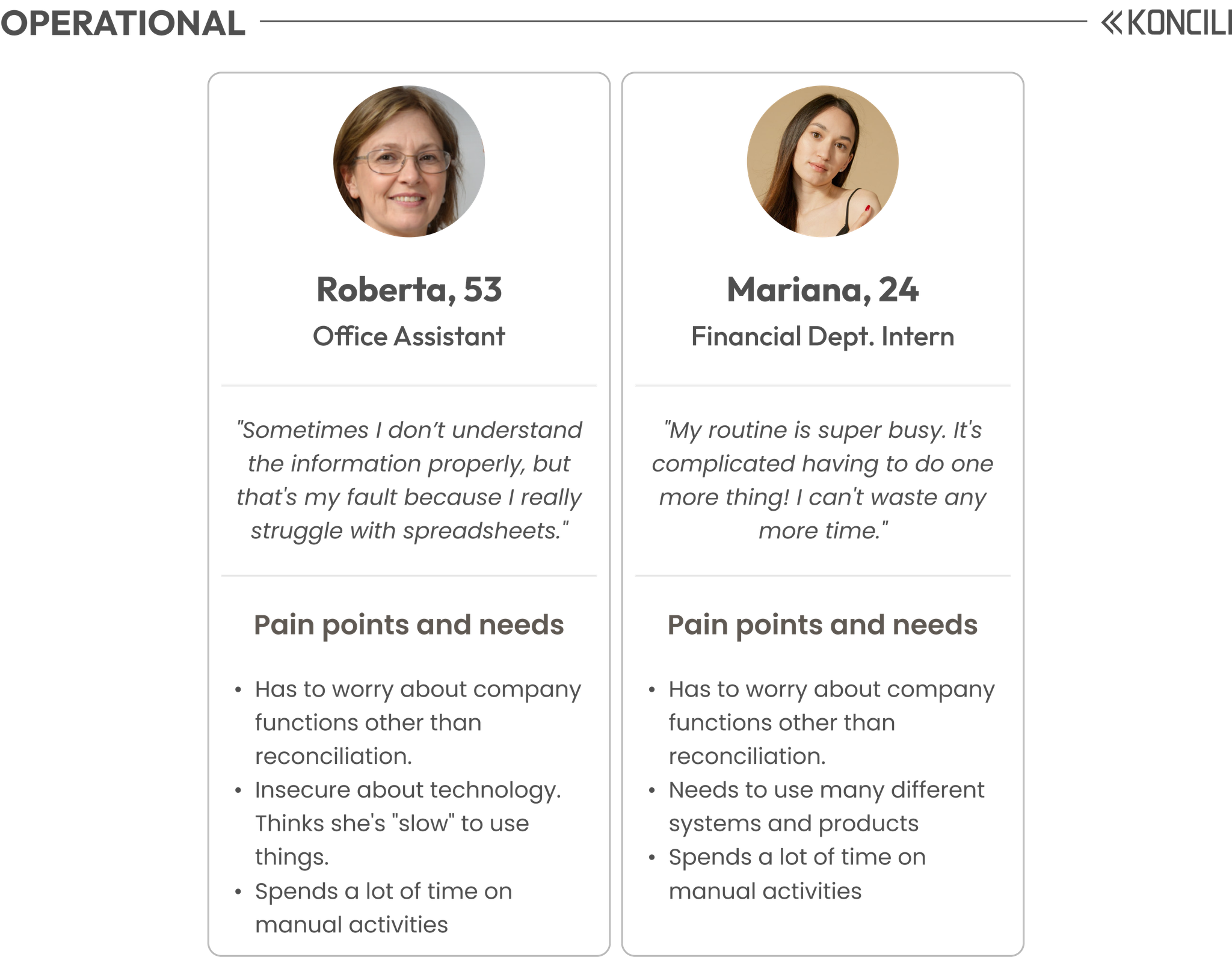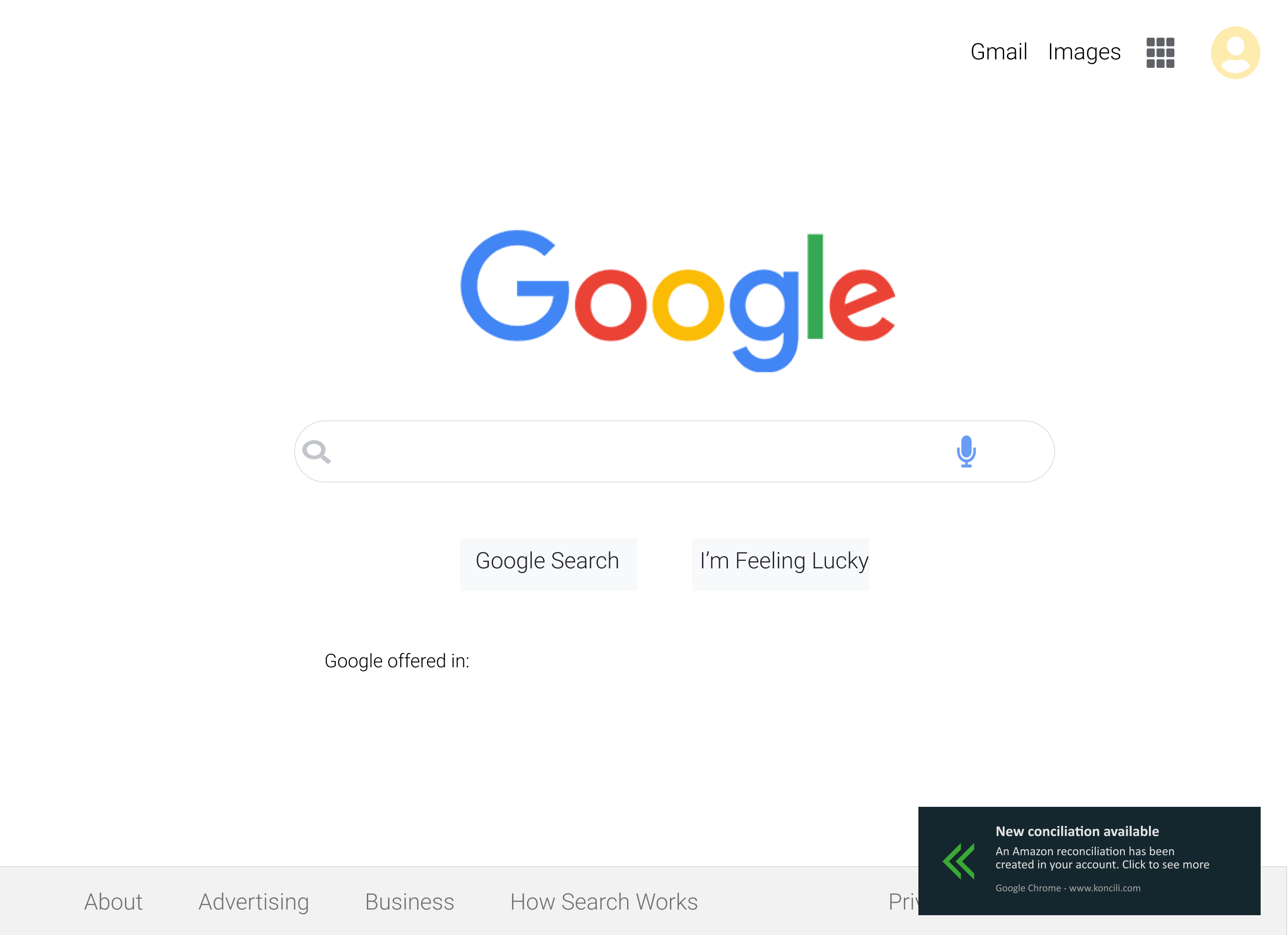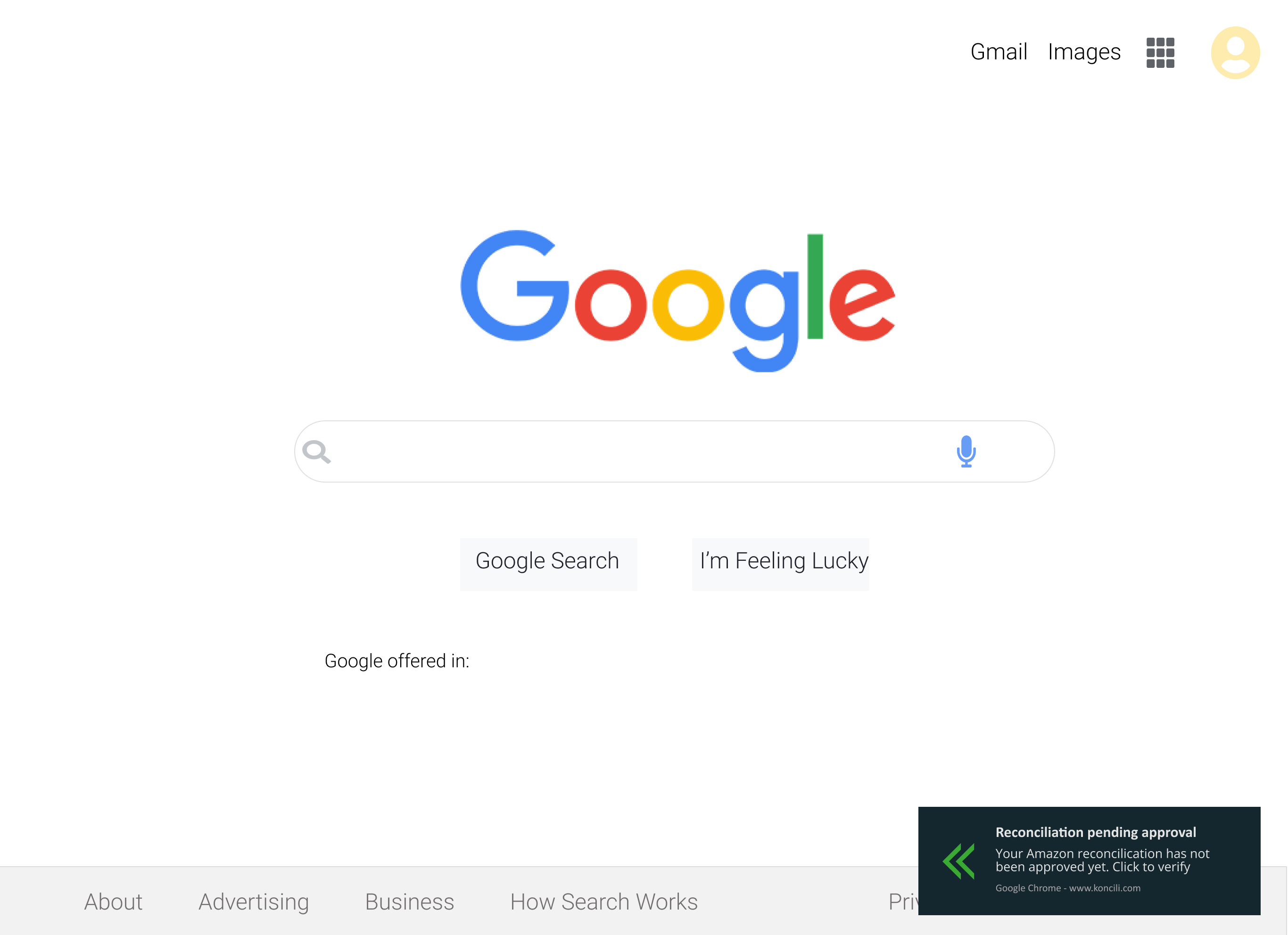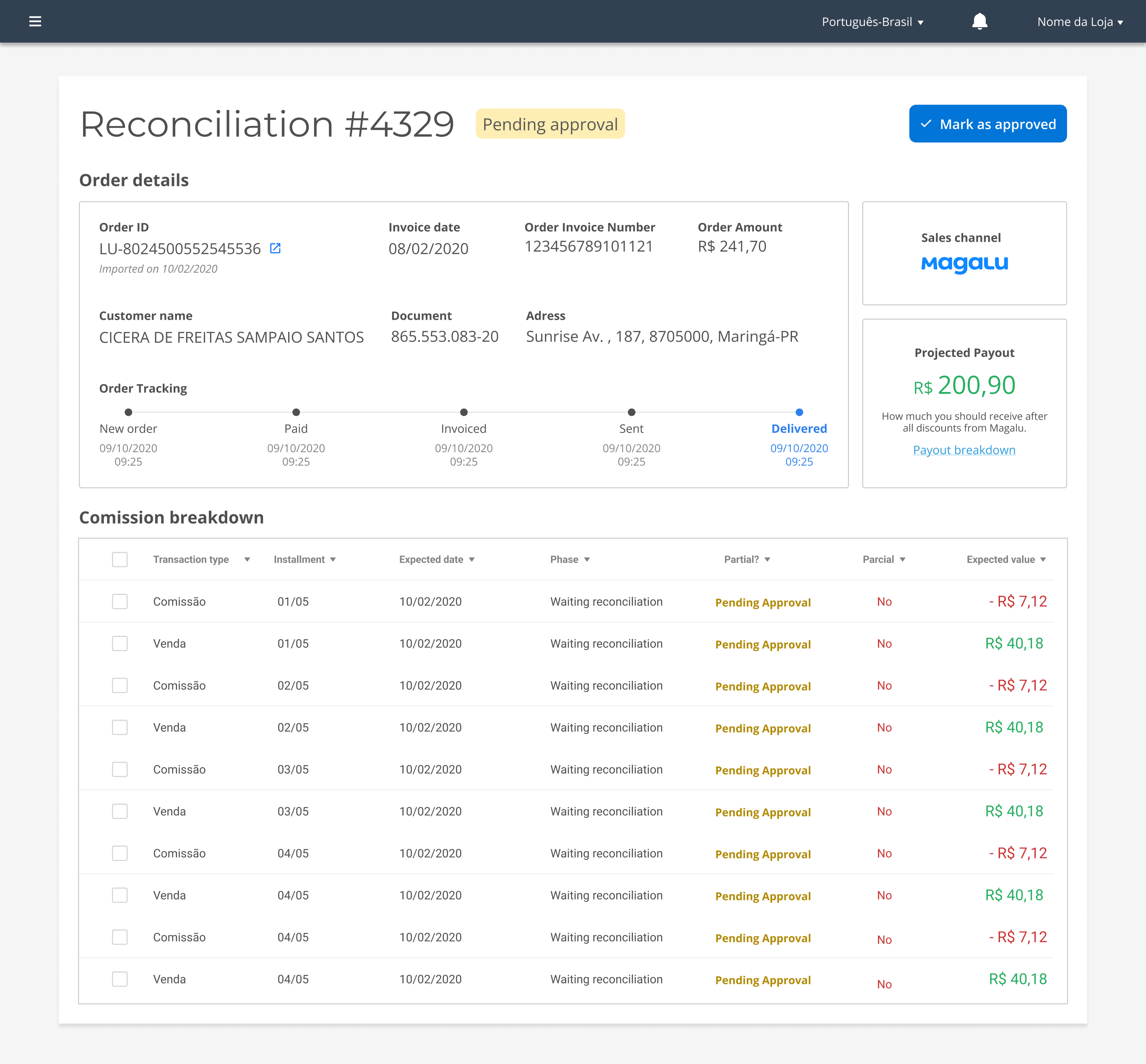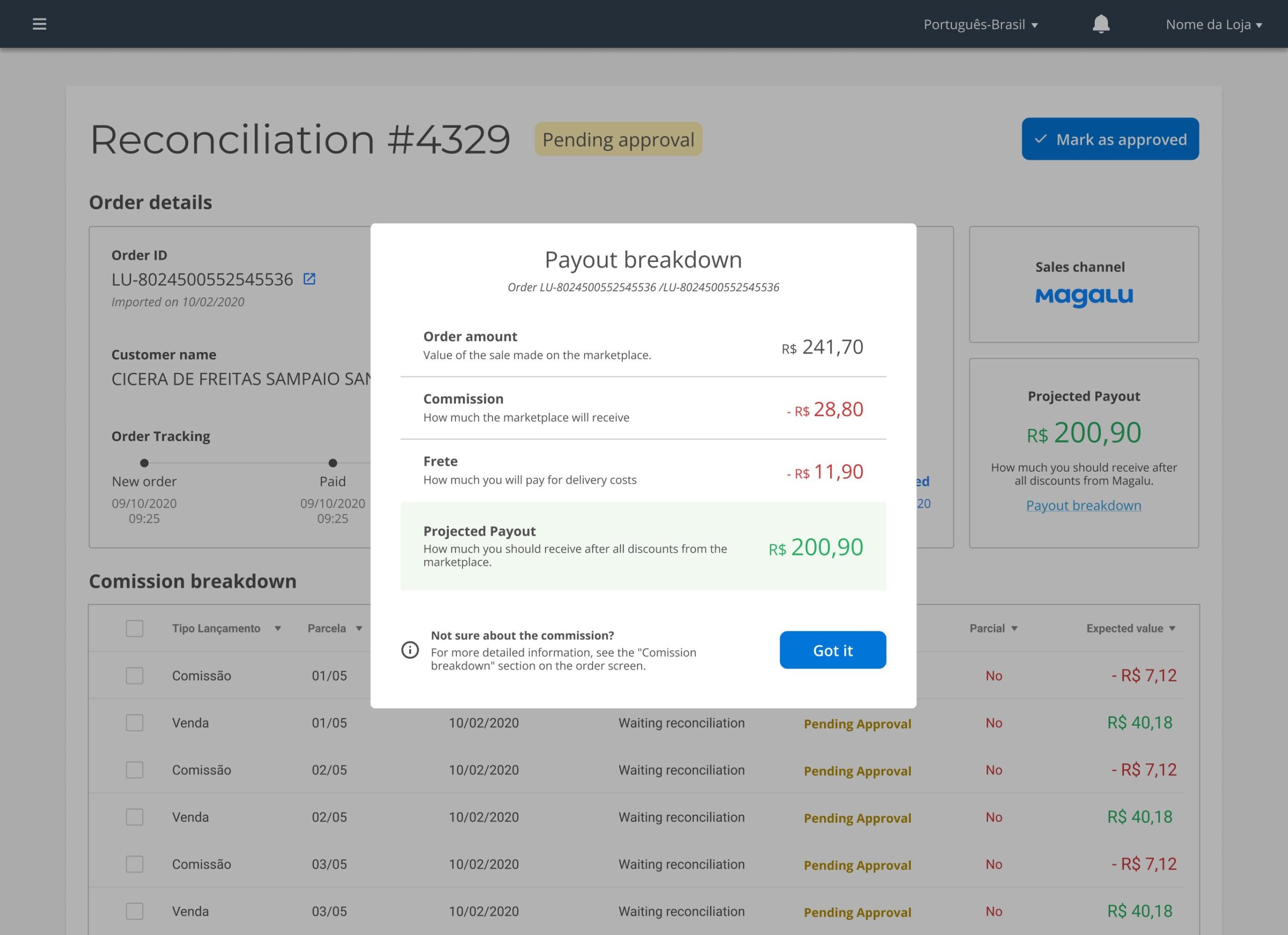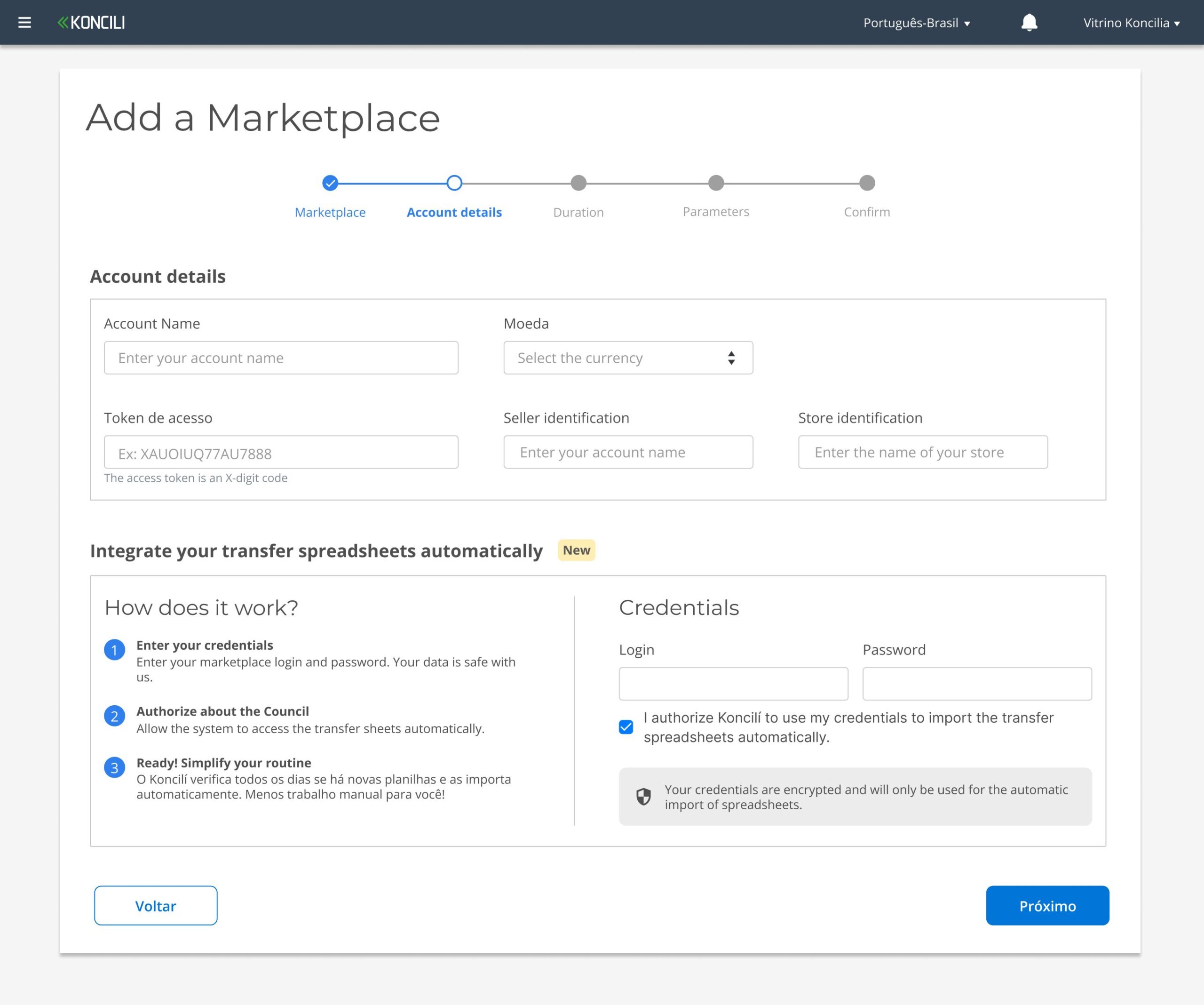

Preventing revenue loss for online stores
How we leveraged User Research + Lightning Decision Jam to enhance a B2B SaaS experience.
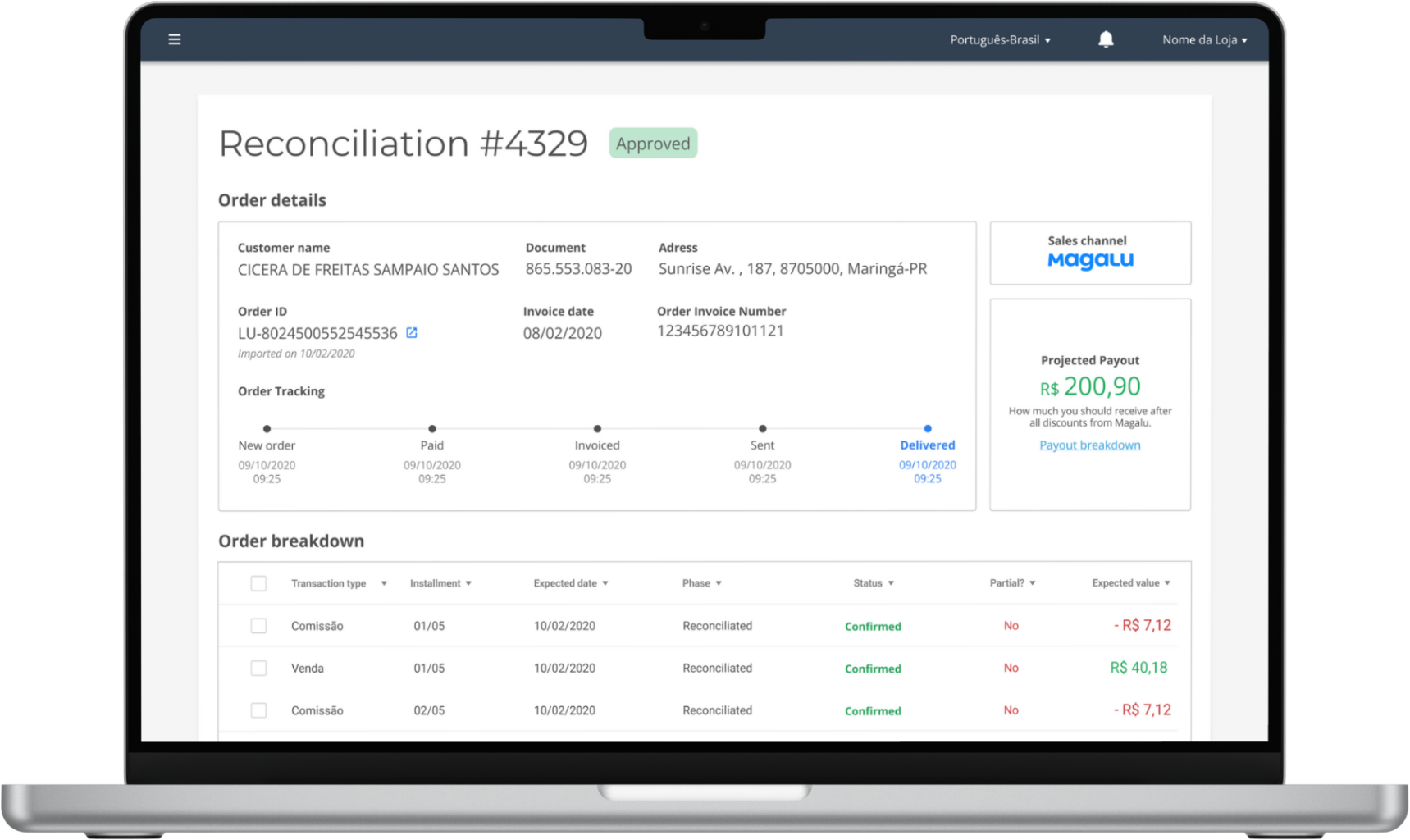
Role
Design Consultant
Platforms
Web (Desktop)
Collaborated with
Product Manager; UX Writer; Frontend & Backend Engineers; System Designers; Brand Designers; Customer Support & Legal (Ops)
TL;DR
Problem
Koncili faced high churn (21%), decreasing reconciliation usage, and a complex onboarding process that overwhelmed users—especially those less tech-savvy. The company also lacked structured feedback loops from its clients.
My work
- Led a redesign process using the Double Diamond framework and:
- Conducted in-depth qualitative research, including contextual inquiries and interviews with over 20 users across 11 organizations.
- Facilitated a Lightning Decision Jam workshop to align the team and generate solutions.
Solution
- Delivered short-term wins proposal (e.g., a FAQ and reactivation campaigns)
- Worked on long-term improvements like onboarding flow, reconciliation screens, and a notification system.
Impact
- Unified the product team's focus on verified user needs and fostered user empathy across departments.
- Simplified onboarding with a self-guided setup process.
- Decreased dependency on customer support by creating a FAQ
Overview
In 2019, marketplaces like Amazon and Mercado Livre were transforming e-commerce in Brazil, driving a 13% growth in marketplace sales—outpacing overall e-commerce—with 95% of online buyers using these platforms.
Our client, an early-stage startup supporting 100+ sellers, launched a B2B SaaS solution to automate payment transfers from these marketplaces.
Their product replaced manual profit-sharing processes and spreadsheets, integrating the marketplace data and generating reconciliation reports from it. Revenue came from each approved transaction.
As one of Brazil's first payment conciliators for marketplaces, the client tapped into a high-demand, low-competition market and positioned itself for rapid growth.
The Challenges
1. High churn
The company had a 21% churn, a high number considering the market's growth.
3. Lengthy onboarding
The software setup was complex due to varying marketplace rules, and the support team spent excessive time training new clients.
2. Reconciliations drop
The company had a 21% churn, a high number considering the market's growth.
4. Lacking user focus
The company had few interactions with their users/clients in their process.
The Design Process
I was inspired by the Double Diamond framework to structure the design process, as it is adaptable and allows for flexibility in tackling complex problems. This process was divided into four phases:
Discovery
Definition
Ideation
Design
Discovery
To ensure a deep understanding of both the product and its users during the discovery process, we employed a range of research methods:
CSD Matrix
We conducted a 1-hour CSD Matrix workshop with the team to define the Certainties, Suppositions, and Doubts, which helped clarify what we wanted to know and guided our research approach in the next steps.
Internal Data
Analyzing Freshdesk support tickets helped identify usability issues, including users problems with adding marketplace setups and order details.
Competitor Analysis
Although direct competitors were limited to two (TrackCash and Equals), we also analyzed similar products, their value propositions, and how marketplaces presented their software.
Contextual Inquiry
We conducted on-site visits to three sellers, engaging with employees from sales and financial departments, including managers, coordinators, and analysts. I was accompanied by our Customer Success Analyst, which played a crucial role in fostering deeper empathy and understanding from her perspective as well.
Remote User Interviews
Given that most of our clients were located in different cities, we opted for remote interviews to ensure broader reach across Brazil. We spoke with approximately 20 individuals across 11 client organizations, covering a range of roles. Each session included a member of the Technical Support Team, a Sales Team representative
Research Findings
After our research was done, we could summarize our findings into main 3 topics:
#1 Users feel overwhelmed and micromanaged at work
We gained valuable insights into the dynamics of different roles and their work conditions.
Many operated in high-stress office environments with little autonomy, juggling numerous tasks beyond reconciliation processes. Micromanagement was common, with supervisors closely monitoring their work, adding to the pressure.
#2 Manual work was still a thing
We gained valuable insights into the dynamics of different roles and their work conditions.
Many operated in high-stress office environments with little autonomy, juggling numerous tasks beyond reconciliation processes. Micromanagement was common, with supervisors closely monitoring their work, adding to the pressure.
#3 Need for reliable support
We gained valuable insights into the dynamics of different roles and their work conditions.
Many operated in high-stress office environments with little autonomy, juggling numerous tasks beyond reconciliation processes. Micromanagement was common, with supervisors closely monitoring their work, adding to the pressure.
Definition
We used research data to create impactful deliverables that helped the entire team better understand customer pain points—both during the buying process and while using the product.
1. Personas
We identified 5 types of users distributed into 2 groups of personas (management and operational). We wanted to focus on their problems instead of adding too much information.
2. Customer Journeys
After that, we mapped their actions and emotions during this journey, dividing it into five steps:
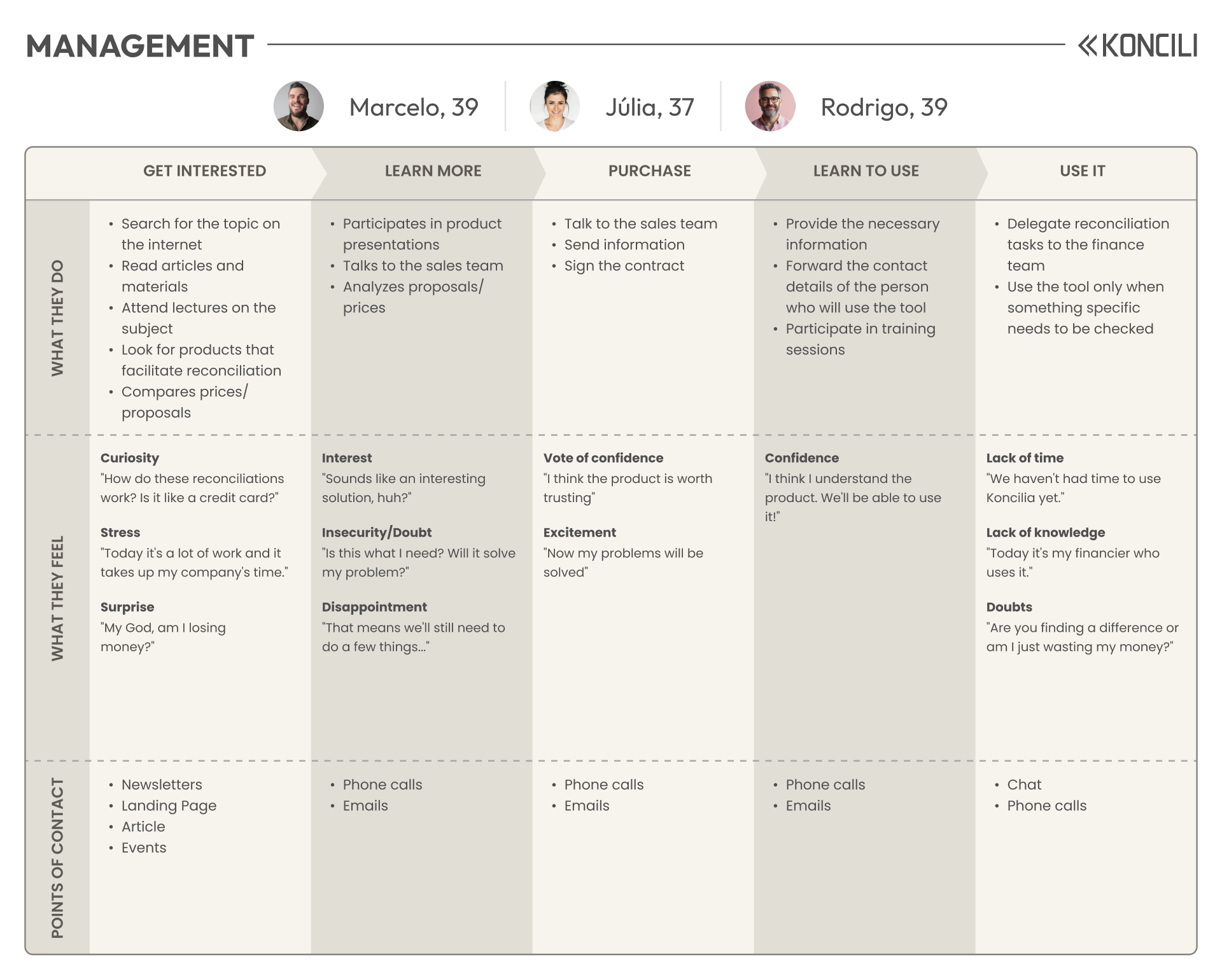
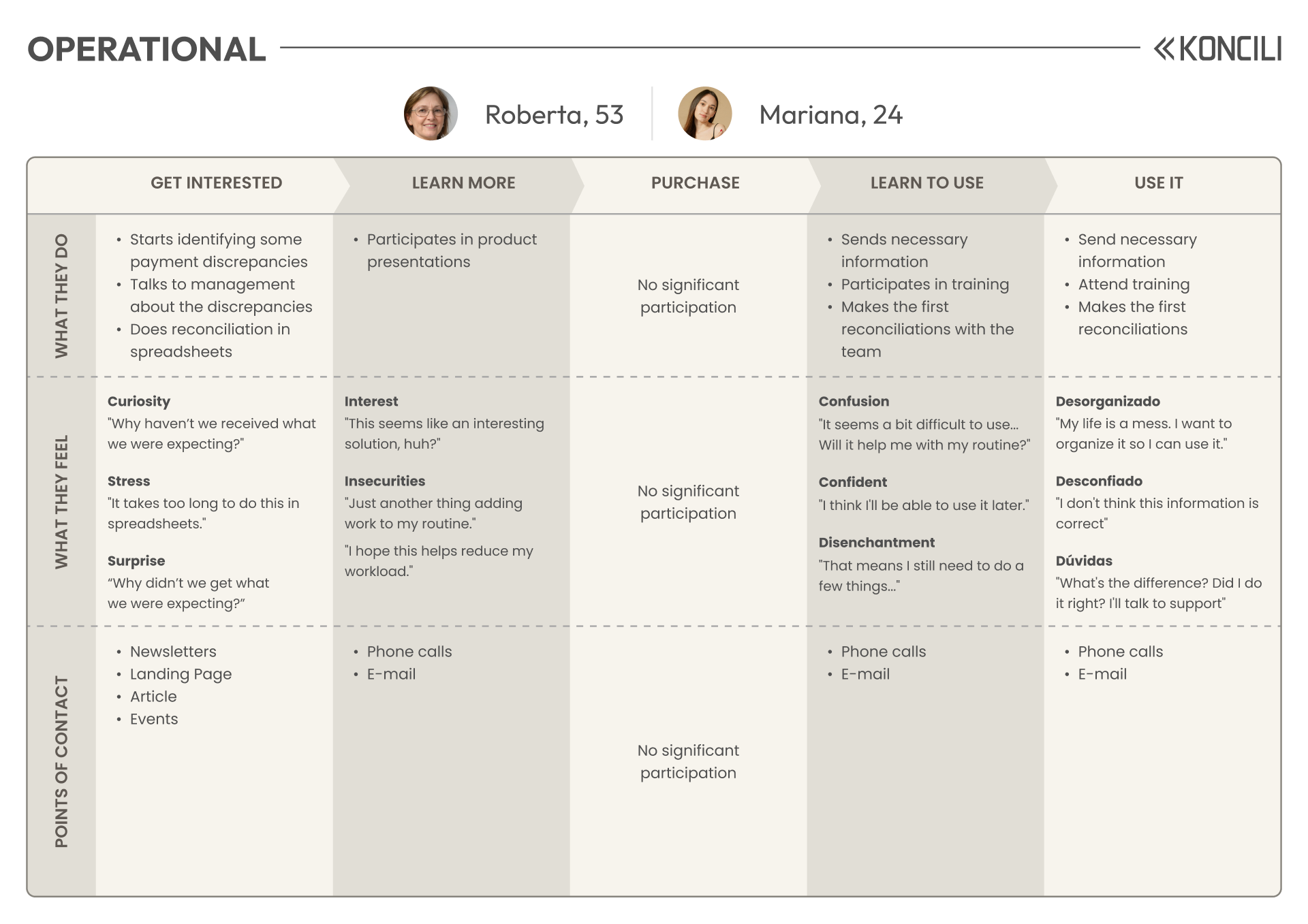
Ideation
For the Ideation phase, we wanted to generate ideas with the team, however, we had considerable schedule restrictions with different members, and we couldn't wait days to bring everyone together.
Since we wanted to generate ideas to validate later, we decided to run an ideation workshop called Lightning Decision Jam, created by AJ&Smart based on the Design Sprint, adjusted to fit into a 2-3 hour window.
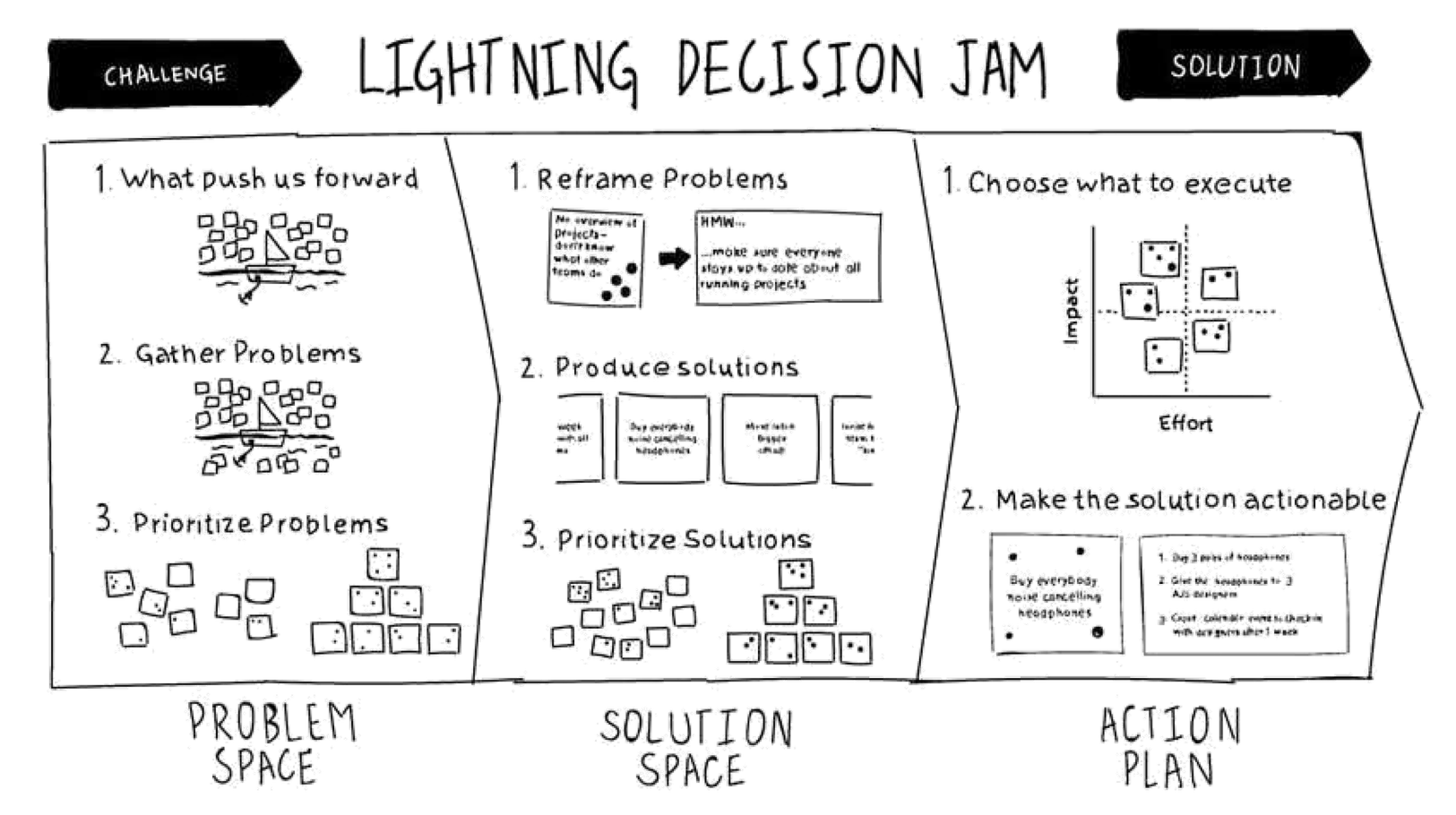
Step 1: Sharing research findings and prioritizing problems
For the Ideation phase, we wanted to generate ideas with the team, however, we had considerable schedule restrictions with different members, and we couldn't wait days to bring everyone together.
Since we wanted to generate ideas to validate later, we decided to run an ideation workshop called Lightning Decision Jam, created by AJ&Smart based on the Design Sprint, adjusted to fit into a 2-3 hour window.
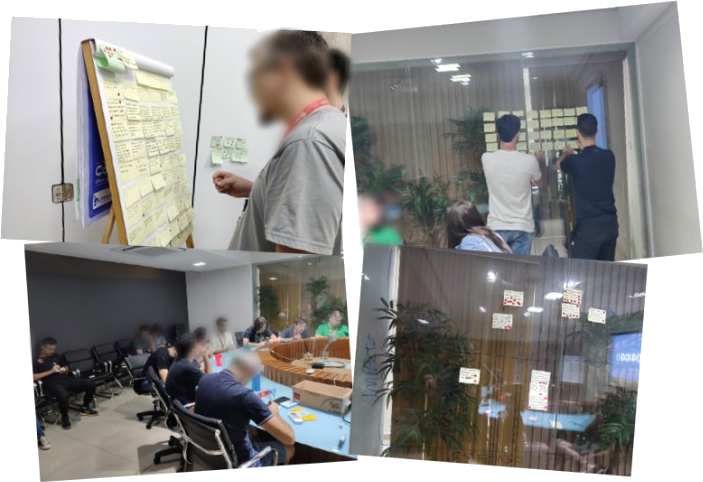
Step 2: Reframing the problems
After that, it was time to reframe them as "How Might We" questions. We've decided to pick the top 3 problems voted by the teamand transformed them into the following questions:

Step 3: Producing and Prioritizing Solutions
Next step, we had the "ideate without discussion" section for each of these questions. After a considerable amount of ideas were generated, we chose the best ones using voting dots and prioritized them using an "Effort x Impact" matrix.
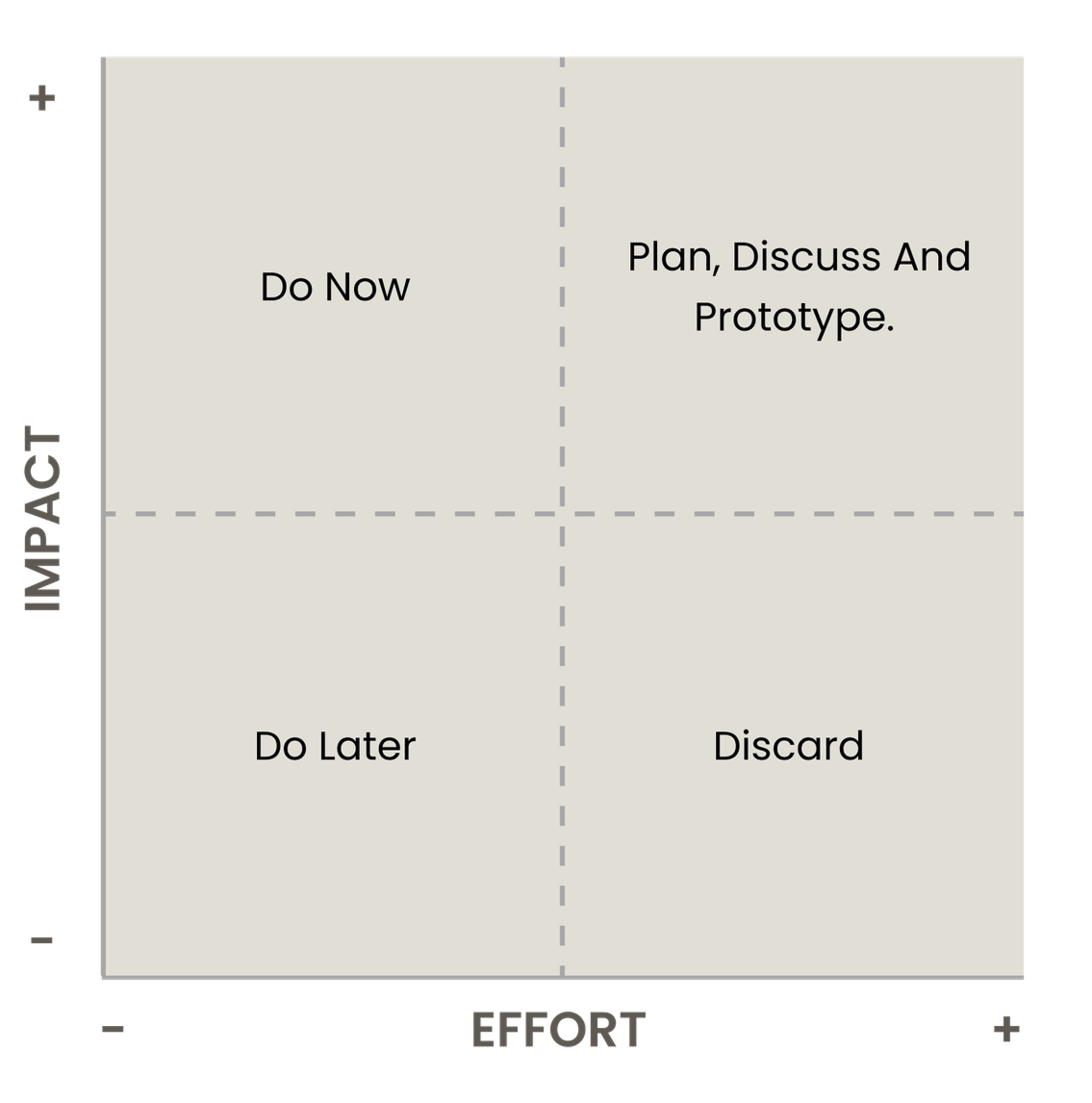
Design
Step 1: Sharing research findings and prioritizing problems
After the workshop, we started with the high-impact, low-effort ideas, most of which were related to customer service and could be implemented without requiring technology or design development. To start delivering value to our customers as quickly as possible, we selected the two most popular initiatives:
- Create a FAQ page featuring answers to the most common customer questions regarding their onboarding.
- Follow up with inactive customers every two weeks to assess their needs and explore ways to reactivate their usage.
While these tasks were being executed, the tech and product teams concentrated on more complex ideas that required greater effort and strategic planning.
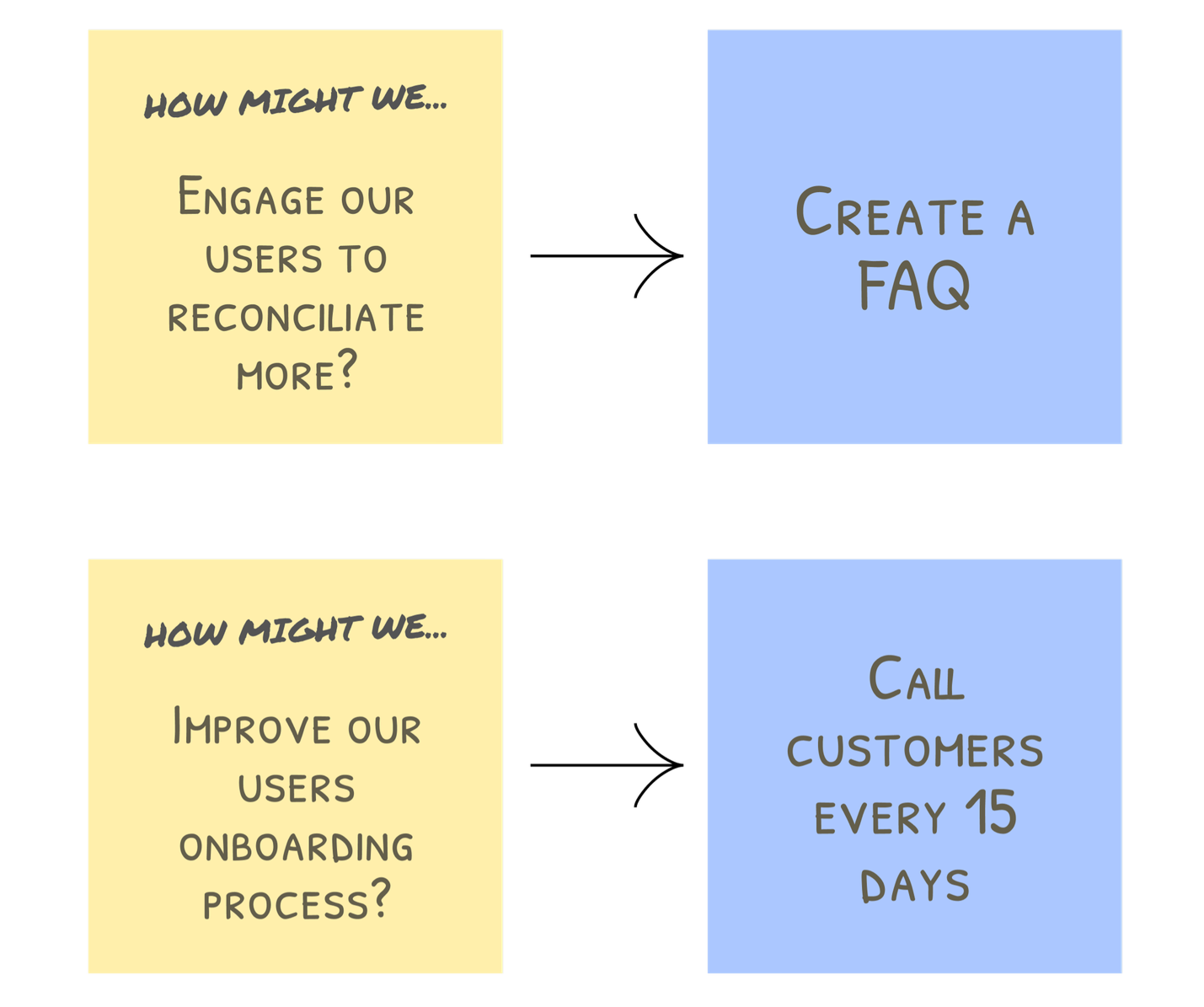
Step 2: Reframing the problems
After the workshop, we selected Ideas with high value and high effort to be discussed, simplified, and prototyped later.
Some of them were transformed into less complex ideas so it could be implemented by the development team to deliver them quicker to our users. Others like the new onboarding process required more planning
Our focus was to reuse some UI components to dedicate the effort to how these solutions would be presented, validating with the development team if it was viable or not:
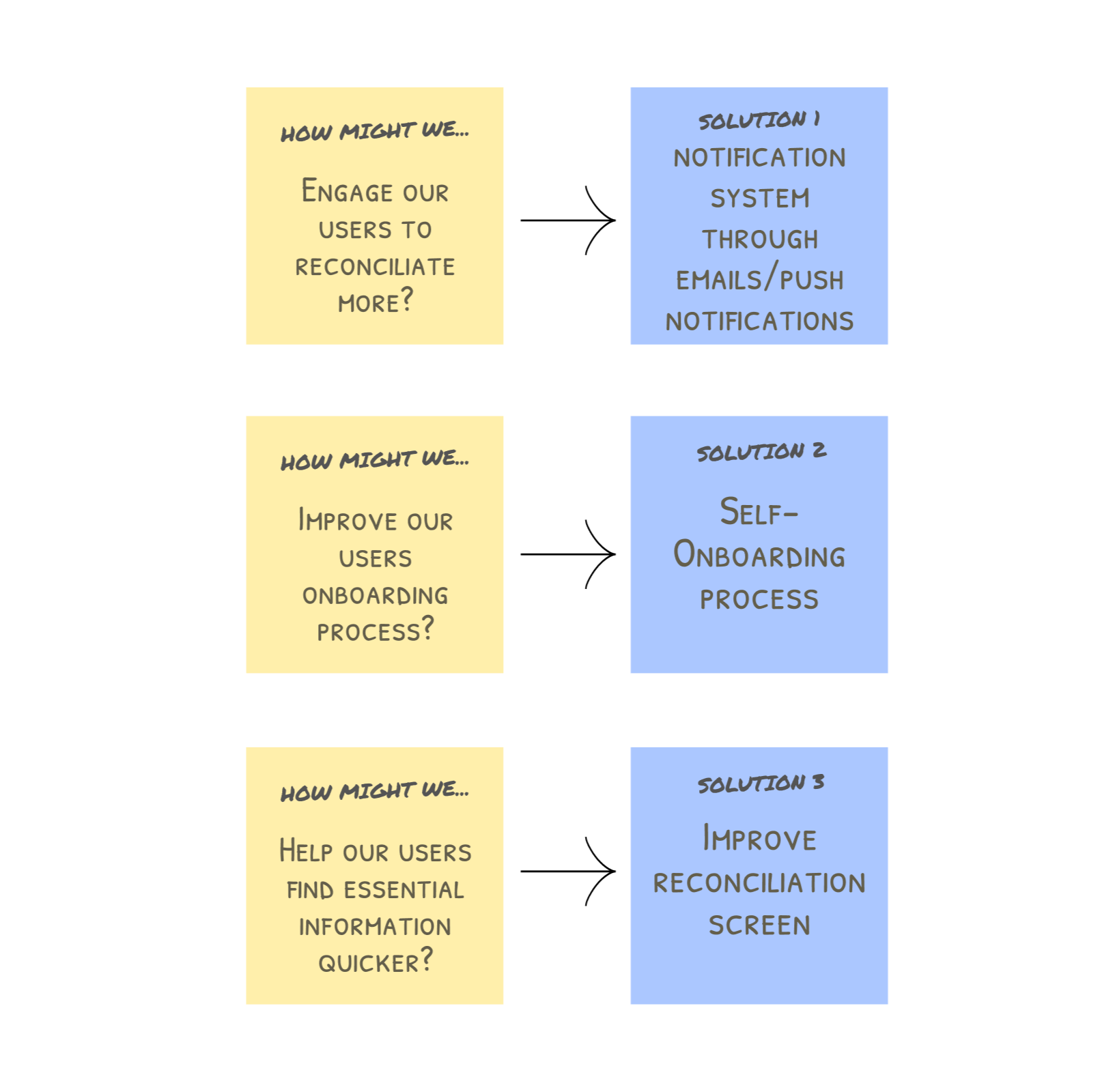
Notification system: emails and desktop push notifications
Improve reconciliation screen
Self-onboarding process
Conclusion
What have we learned?
- The best solutions aren't always technological. Sometimes, the simplest approach can have the greatest impact.
- This project reminded me of a phrase I deeply resonate with: "The role of the designer is to be a facilitator." Collaborating with people from diverse teams and roles is always a rewarding challenge. It's gratifying to see individuals realize that generating great ideas is not the exclusive domain of the "genius designer" or the "skilled developer," but a shared responsibility that everyone can contribute to—breaking down stereotypes and fostering collaboration.
What could have been better?
- While the Lightning Decision Jam (LDJ) is highly flexible in accommodating varying group sizes, we noticed that having too many participants made it challenging to stay focused during certain stages.
- Some participants were inclined to delve deeper into discussions, even when the approach emphasized avoiding debates and focusing on "selling" ideas.
- Allocating more time for usability testing on proposed solutions before moving into development would have helped validate ideas further.
Thanks for reading!
Selected Works
